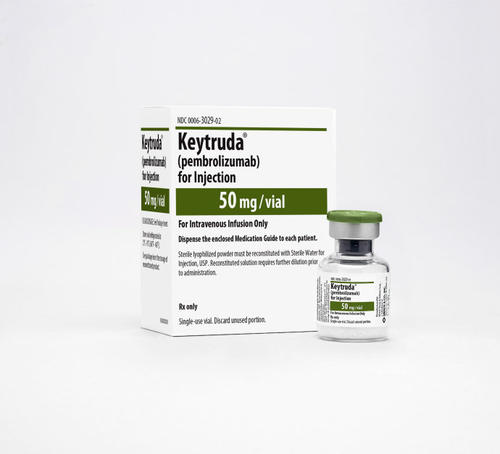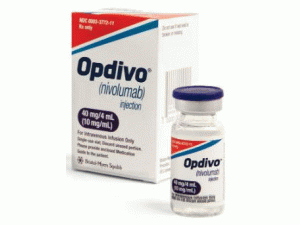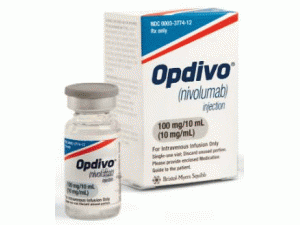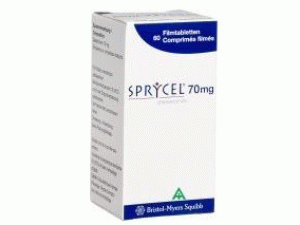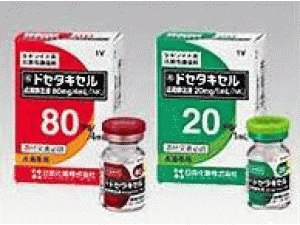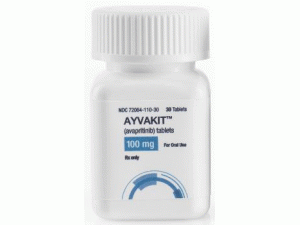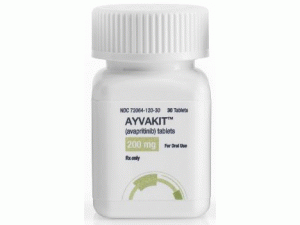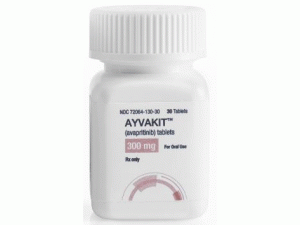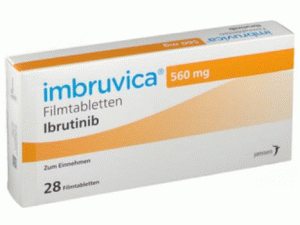盐酸表柔比星注射液epirubicin(ELLENCE injection 200mg/100mL)
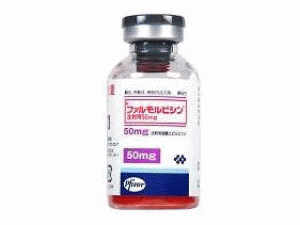 产地国家:美国
产地国家:美国
处方药:是
所属类别: 2毫克/毫升 200毫克/100毫升/瓶
包装规格: 2毫克/毫升 200毫克/100毫升/瓶
计价单位:瓶
生产厂家英文名:Pfizer Inc.
原产地英文商品名:Ellence sdv 2mg/ml 200mg/100ml/VIAL
原产地英文药品名:epirubicin hydrochloride
中文参考商品译名:艾伦斯注射剂 2毫克/毫升 200毫克/100毫升/瓶
中文参考药品译名:盐酸表柔比星
简介:
抗癌药ELLENCE(EPIRUBICIN HYDROCHLORIDE 中文名:表柔比星)注射液是一种用于化疗的蒽环类药物。可以与其他药物联合使用,以治疗已经手术切除肿瘤的患者的乳腺癌、恶性淋巴瘤、小细胞肺癌、原发性肝癌、鼻咽癌和食管癌、软组织肉瘤、肾细胞癌、胰腺癌、肺腺癌、直肠癌、头颈癌。本品由辉瑞公司在美国以商品名Ellence上市。公司:辉瑞公司ELLENCE(盐酸表柔比星[epirubicin hydrochloride])注射液,供注射使用美国最初批准:1999年警告:严重或生命危险的血液学和其他不良反应查看完整的盒装警告的完整处方信息。在给药期间与外渗相关的严重局部组织坏死,心肌毒性,表现为最严重的可能性充血性心力衰竭(CHF)继发性急性髓性白血病(AML)减少肝功能受损患者的剂量严重的骨髓抑制仅在经历过使用癌症化学治疗剂的医生的监督下进行管理
作用机制:表柔比星是一种蒽环类细胞毒性剂。尽管已知蒽环霉素可干扰真核细胞内的许多生物化学和生物学功能,但表柔比星的细胞毒性和/或抗增殖性质的确切机制尚未完全阐明。表柔比星通过在核苷酸碱基对之间插入其平面环而与DNA形成复合物,从而抑制核酸(DNA和RNA)和蛋白质合成。这种插入通过拓扑异构酶II触发DNA切割,导致杀细胞活性。表柔比星还抑制DNA解旋酶活性,阻止双链DNA的酶促分离并干扰复制和转录。表柔比星还通过产生细胞毒性自由基参与氧化/还原反应。表柔比星的抗增殖和细胞毒活性被认为是由这些或其他可能的机制产生的。表柔比星在体外对多种已建立的鼠和人细胞系以及人肿瘤的原代培养物具有细胞毒性。它还在体内对抗无胸腺小鼠(包括乳腺肿瘤)中的各种鼠肿瘤和人异种移植物。
适应症和用法:ELLENCE Injection是一种蒽环类拓扑异构酶II抑制剂,适用于有原发性乳腺癌切除术后腋窝淋巴结肿大的患者的辅助治疗成分。也可治恶性淋巴瘤、小细胞肺癌、原发性肝癌、鼻咽癌和食管癌、软组织肉瘤、肾细胞癌、胰腺癌、肺腺癌、直肠癌、头颈癌
剂量和给药:在重复的3至4周周期中静脉内给药,在每个周期的第1天给予总剂量或平均分配并在每个周期的第1天和第8天给予。剂量为100至120mg/m2。当以某些组合给药时,剂量减少是可能的。第一个治疗周期后的剂量调整应根据血液学和非血液学毒性进行。减少肝功能损害患者的剂量。考虑严重肾功能不全患者的剂量较低。
剂量形式和强度:一次性使用含有2 mg盐酸表柔比星的小瓶作为无菌,无防腐剂,即用型溶液(50mg/25mL和200mg/100mL)
禁忌症:如果患者有以下任何一种情况,则不应接受ELLENCE注射治疗:基线中性粒细胞计数<1500细胞/mm3;心肌病和/或心力衰竭,近期心肌梗死,严重心律失常;以前用蒽环类药物治疗达到最大累积剂量;对表柔比星,其他蒽环类药物,oranthracenediones的超敏反应;或严重的肝功能障碍。
警告和注意事项:
剂量依赖性,可逆性白细胞减少症和/或中性粒细胞减少症是与细胞相关的血液学毒性的显着表现,并且代表最常见的急性剂量限制性毒性。心脏毒性是已知的蒽环类治疗风险,可能由早期(或急性)或晚期(延迟)事件表现。已经报道了在患有嗜中性粒细胞白血病的患者中发生继发性急性髓性白血病,其具有或不具有白血病前期。在用ELLENCE治疗前和治疗期间应评估血清总胆红素和AST水平。胆红素或AST升高的患者可能会经历较慢的药物清除而总体毒性增加。这些患者建议使用较低剂量。尚未评估严重肝功能损害的患者。应在治疗前和治疗期间评估血清肌酐。血清肌酐> 5mg/dL的患者需要进行剂量调整。
尚未研究接受透析的患者。由于伴随药物诱导的高度敏感性肿瘤细胞快速溶解(肿瘤溶解综合征)的广泛嘌呤分解代谢,ELLENCE可能诱发高尿酸血症。在由化学治疗剂(包括ELLENCE)免疫受损的患者中施用活的或减毒活的疫苗可能导致严重或致命的感染。静脉硬化可能是由注射到小血管或从重复注射到同一静脉引起的。输注过程中ELLENCE的外渗可能导致局部疼痛,严重的组织损伤(膀胱炎,严重的蜂窝织炎)和坏死。面部潮红以及沿着静脉的局部红斑破裂可能表明过度施用过快。
它可能先于局部静脉炎或血栓性静脉炎。患者施用120mg/m 2的ELLENCE方案作为组合化疗的组成部分还应接受甲氧苄氨嘧啶 - 磺胺甲基异恶唑(例如,Septra®,Bactrim®)或氟喹诺酮的预防性抗生素治疗。ELLENCE是emetigenic。止吐药可以减少恶心和呕吐;在使用ELLENCE之前,应考虑预防性使用止吐药,特别是与其他药物联合使用时。在先前的放射疗法之后施用ELLENCE可以在照射部位诱导炎性回忆反应。血栓性静脉炎和血栓栓塞现象,包括肺动脉栓塞因使用ELLENCE而巧合地报道了栓塞(在某些情况下是致命的)。施用于孕妇时,ELLENCE可能会对胎儿造成伤害。为胎儿提供潜在风险的女性。
不良反应:在早期乳腺癌中,≥10%的患者发生急性不良事件,包括白细胞减少,中性粒细胞减少,贫血,血小板减少,无症状,嗜睡,恶心/呕吐,粘膜炎,腹泻,感染,结膜炎/角膜炎,脱发,局部毒性和皮疹/瘙痒。
药物相互作用:不要将表阿霉素与其他心脏毒性药物联合使用,除非密切监测患者的心脏功能。用ELLENCE治疗期间停用西咪替丁。
用于特定人群:护理母亲:在服用ELLENCE之前停止护理。儿科用途:ELLENCE在儿科患者中的安全性和有效性尚未确定。小儿患者可能面临更高风险的黄霉素诱导的心脏毒性和慢性CHF的急性表现。老年人使用:当对年龄≥70岁的女性患者进行药物治疗时,应注意监测其毒性。
存储:冷藏至2ºC至8ºC(36ºF至46ºF)。 不要冻结。 避光。在冷藏条件下储存注射用溶液可导致凝胶化产物的形成。 在受控的室温(15-25℃)下,在2至最多4小时的平衡后,该凝胶化产物将恢复至轻微粘稠至流动的溶液。 注射溶液应在冷藏后24小时内使用。
英文版说明书:
EllenceGeneral InformationELLENCE Injection (epirubicin hydrochloride injection) is an anthracycline cytotoxic agent intended for intravenous administration. ELLENCE is supplied as a sterile, clear, red solution and is available in polypropylene vials containing 50 and 200 mg of epirubicin hydrochloride as a preservative-free, ready-to-use solution. Each milliliter of solution contains 2 mg of epirubicin hydrochloride. Inactive ingredients include sodium chloride, USP, and water for injection, USP. The pH of the solution has been adjusted to 3.0 with hydrochloric acid, NF. Epirubicin hydrochloride is the 4’-epimer of doxorubicin and is a semi-synthetic derivative of daunorubicin. The chemical name is (8S-cis)-10-[(3-amino-2,3,6-trideoxy-a-L-arabino- hexopyranosyl)oxy]-7,8,9,10-tetrahydro-6,8,11-trihydroxy-8-(hydroxyacetyl)-1-methoxy-5,12- naphthacenedione hydrochloride. The active ingredient is a red-orange hygroscopic powder, with the empirical formula C27H29NO11HCl and a molecular weight of 579.95.Clinical ResultsTwo randomized, open-label, multicenter studies eva luated the use of ELLENCE Injection 100 to 120 mg/m 2 in combination with cyclophosphamide and fluorouracil for the adjuvant treatment of patients with axillary-node-positive breast cancer and no evidence of distant metastatic disease (Stage II or III). Study MA-5 eva luated 120 mg/m 2 of epirubicin per course in combination with cyclophosphamide and fluorouracil (CEF-120 regimen). This study randomized premenopausal and perimenopausal women with one or more positive lymph nodes to an epirubicin-containing CEF- 120 regimen or to a CMF regimen. Study GFEA-05 eva luated the use of 100 mg/m 2 of epirubicin per course in combination with fluorouracil and cyclophosphamide (FEC-100). This study randomized pre- and postmenopausal women to the FEC-100 regimen or to a lower-dose FEC-50 regimen. In the GFEA-05 study, eligible patients were either required to have > 4 nodes involved with tumor or, if only 1 to 3 nodes were positive, to have negative estrogen- and progesterone-receptors and a histologic tumor grade of 2 or 3. A total of 1281 women participated in these studies. Patients with T4 tumors were not eligible for either study.Side EffectsHematologic toxicity, cardiotoxicity can result. Patients should be informed of the expected adverse effects of epirubicin, including gastrointestinal symptoms (nausea, vomiting, diarrhea, and stomatitis) and potential neutropenic complications.Mechanism of ActionIntravenously administered solution. Epirubicin is an anthracycline cytotoxic agent. Although it is known that anthracyclines can interfere with a number of biochemical and biological functions within eukaryotic cells, the precise mechanisms of epirubicin’s cytotoxic and/or antiproliferative properties have not been completely elucidated. Epirubicin forms a complex with DNA by intercalation of its planar rings between nucleotide base pairs, with consequent inhibition of nucleic acid (DNA and RNA) and protein synthesis. Such intercalation triggers DNA cleavage by topoisomerase II, resulting in cytocidal activity. Epirubicin also inhibits DNA helicase activity, preventing the enzymatic separation of double-stranded DNA and interfering with replication and transcription. Epirubicin is also involved in oxidation/reduction reactions by generating cytotoxic free radicals. The antiproliferative and cytotoxic activity of epirubicin is thought to result from these or other possible mechanisms. Epirubicin is cytotoxic in vitro to a variety of established murine and human cell lines and primary cultures of human tumors. It is also active in vivo against a variety of murine tumors and human xenografts in athymic mice, including breast tumors.
药品价格查询,专业药品查询网站,药品说明书查询,药品比价 » 盐酸表柔比星注射液epirubicin(ELLENCE injection 200mg/100mL)

